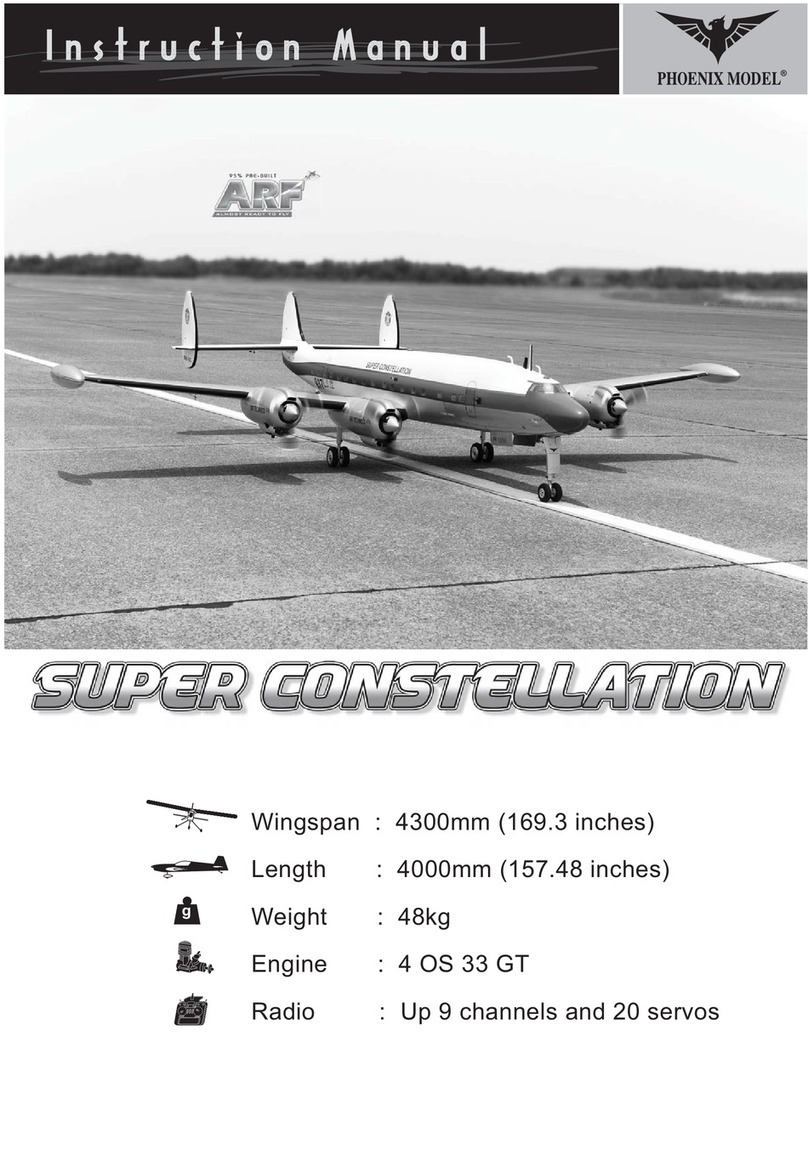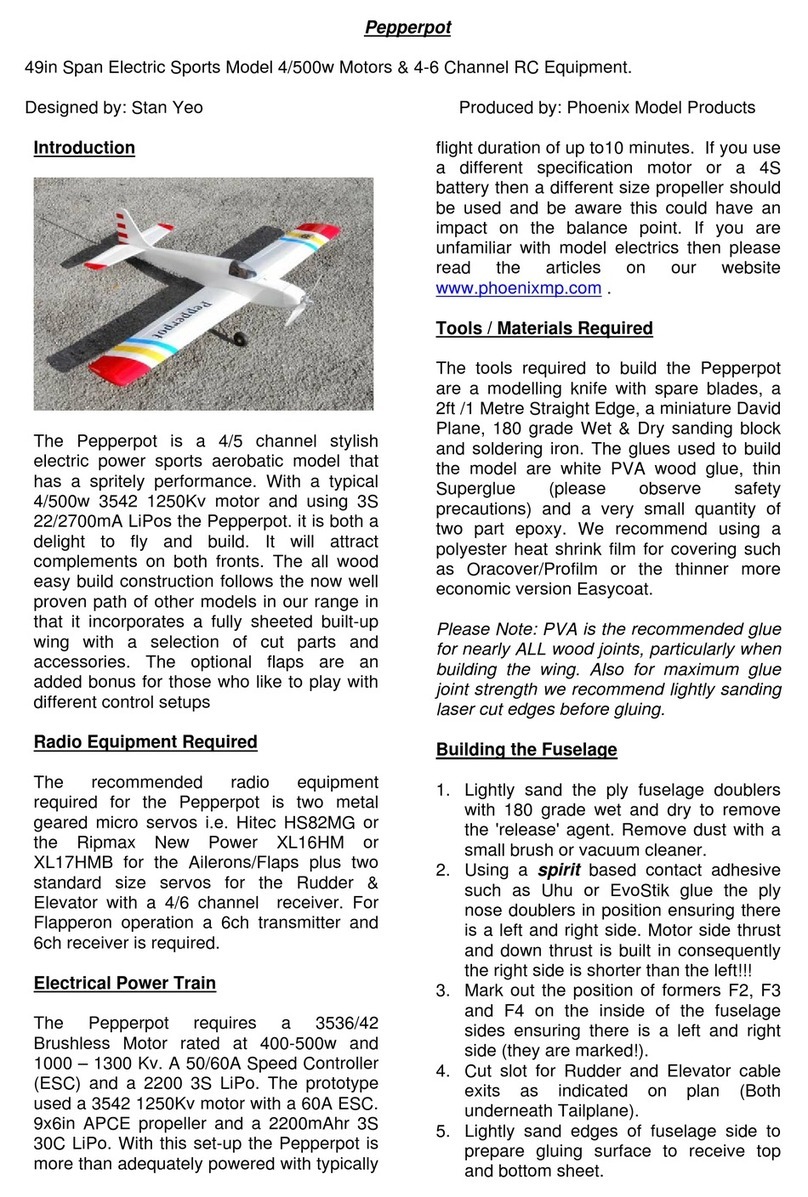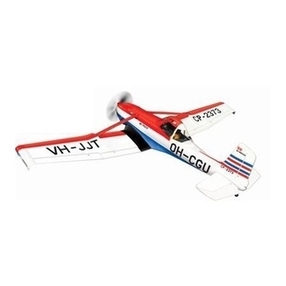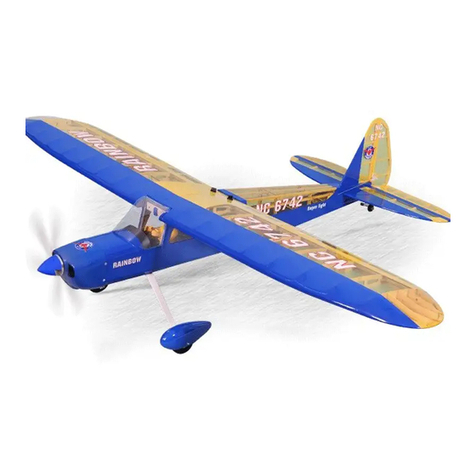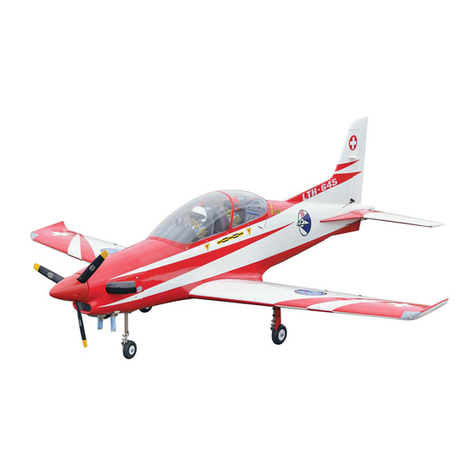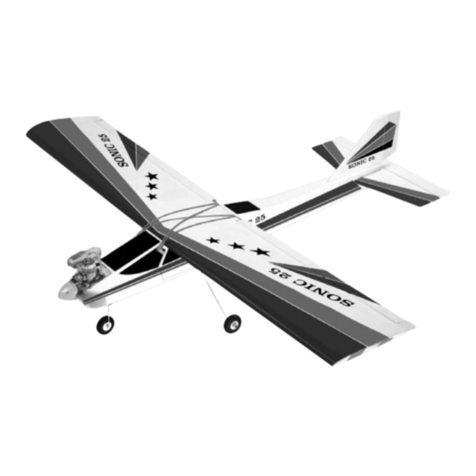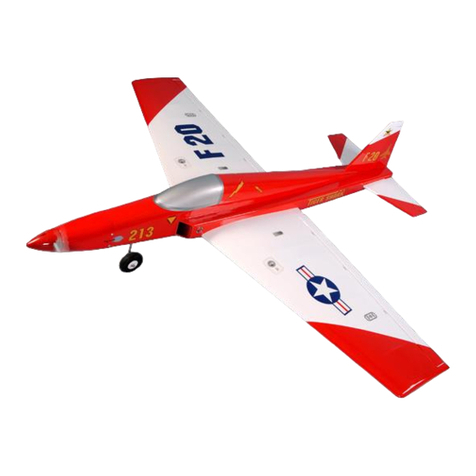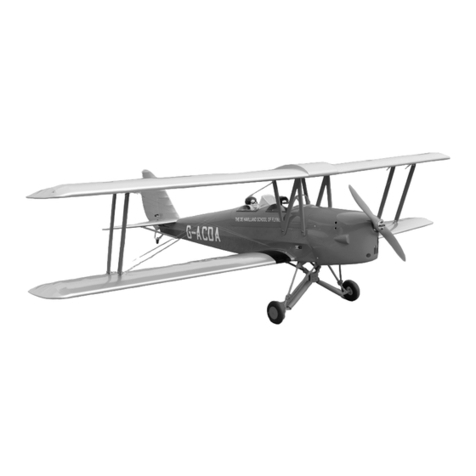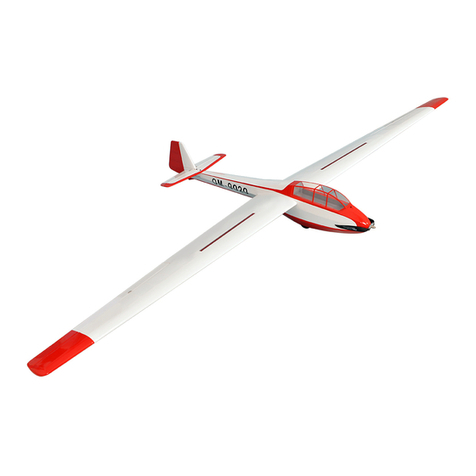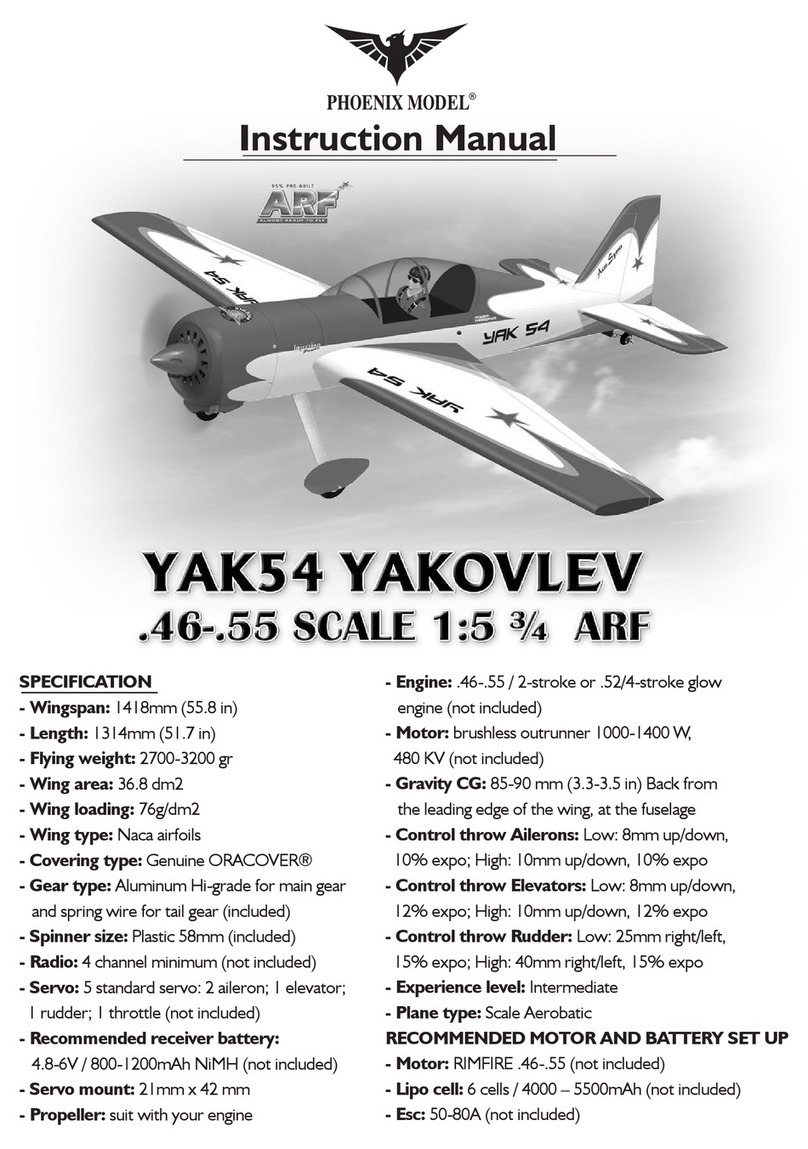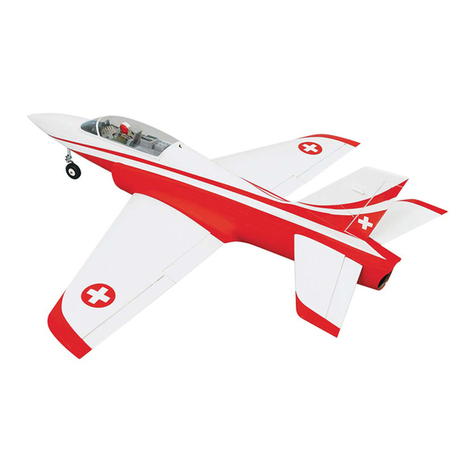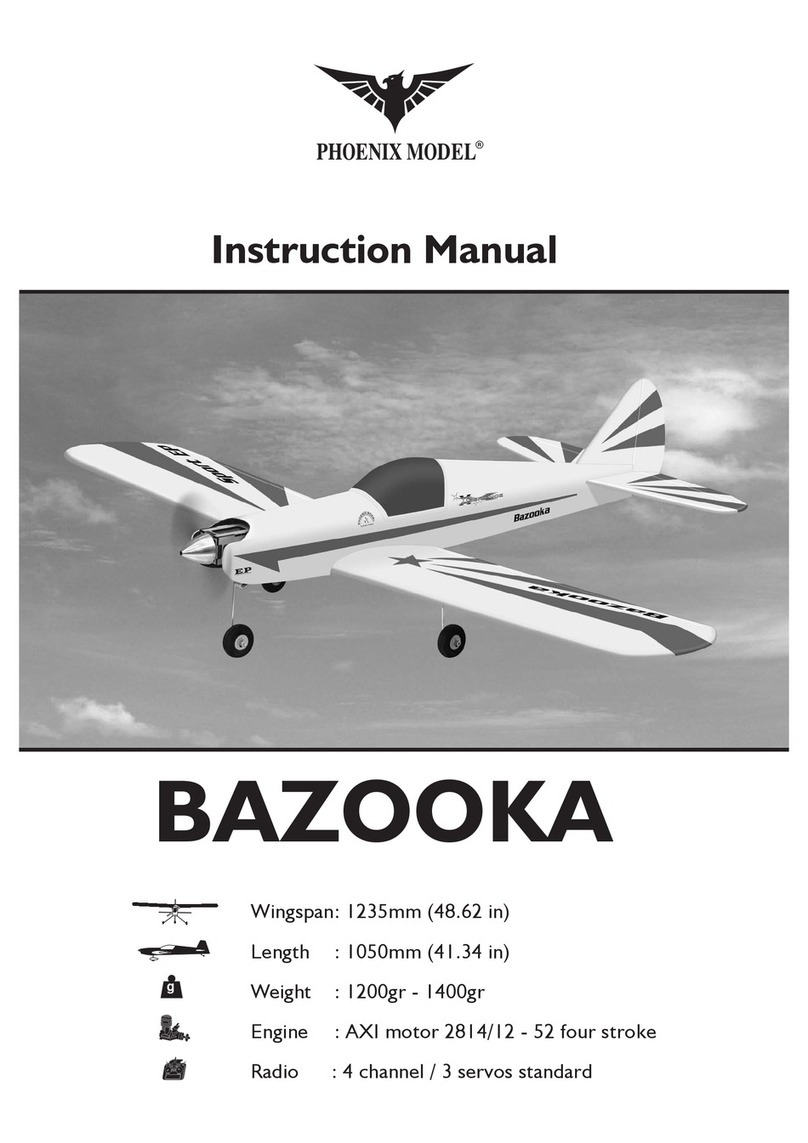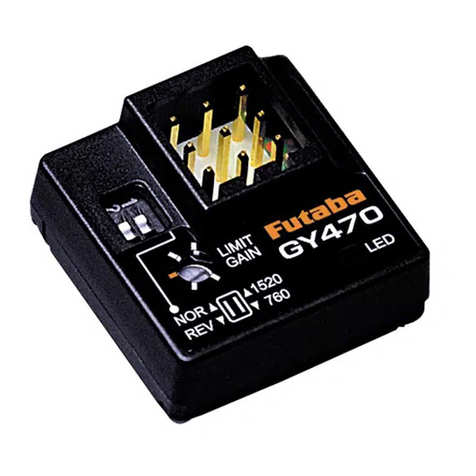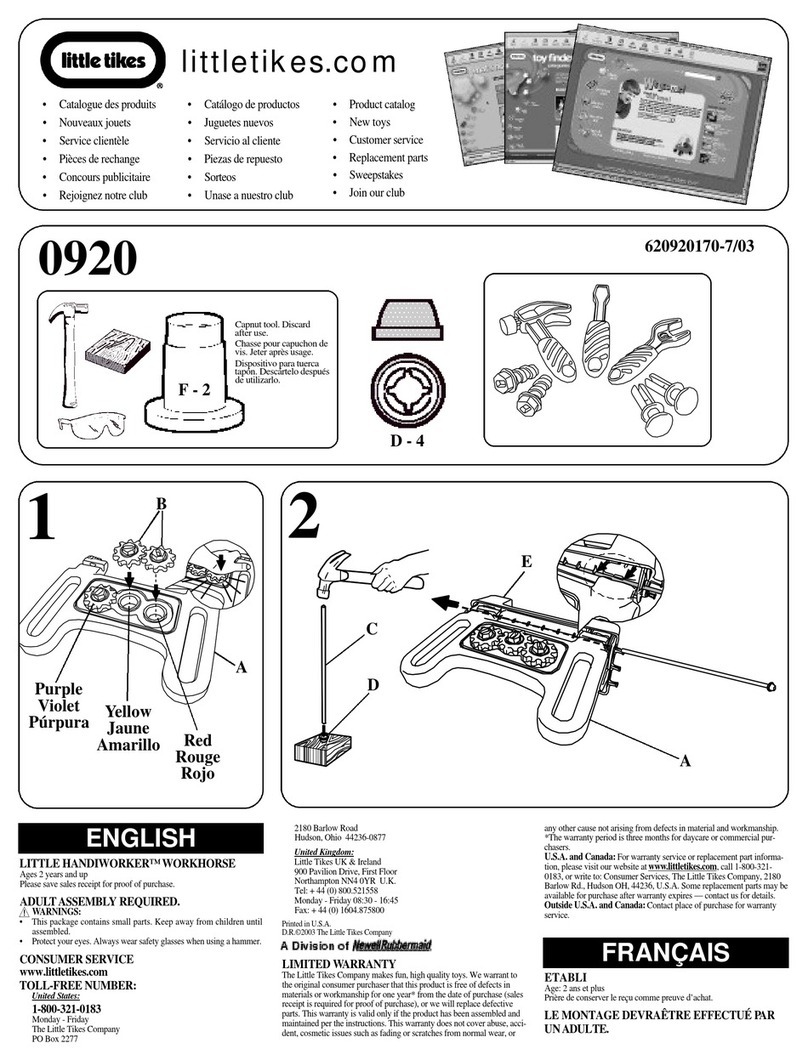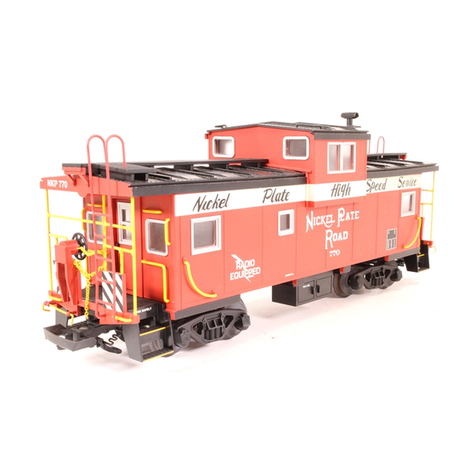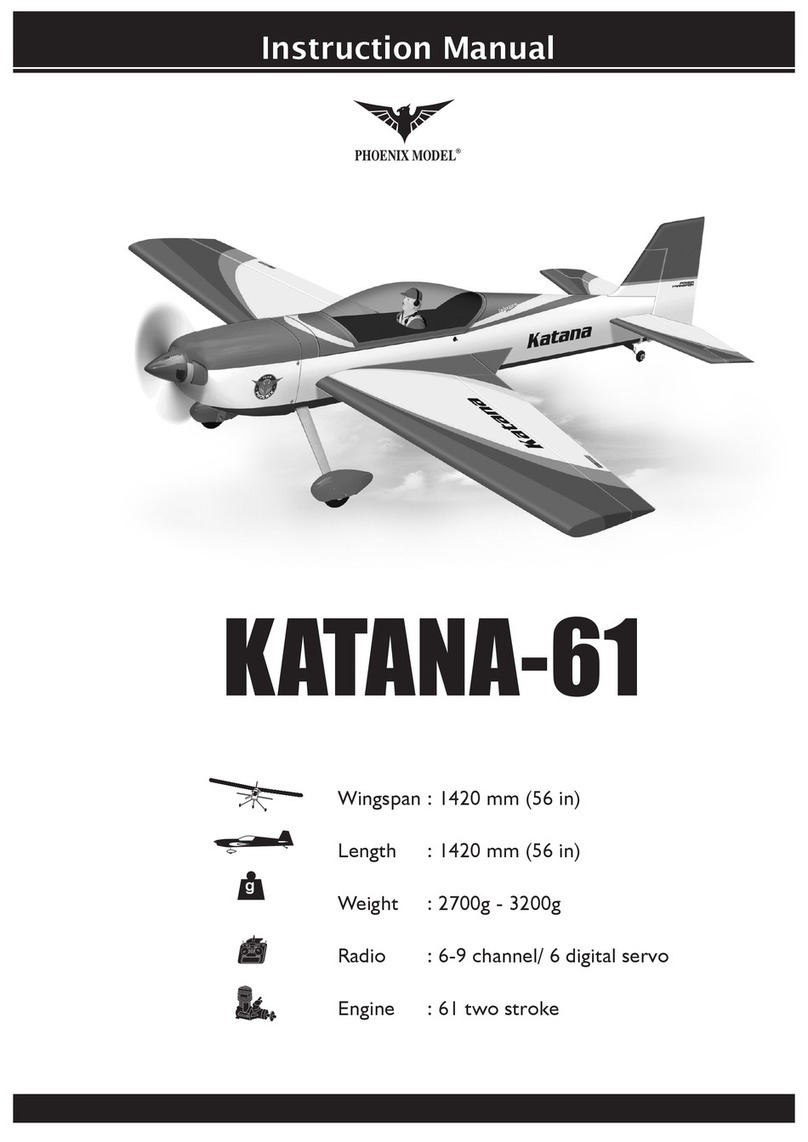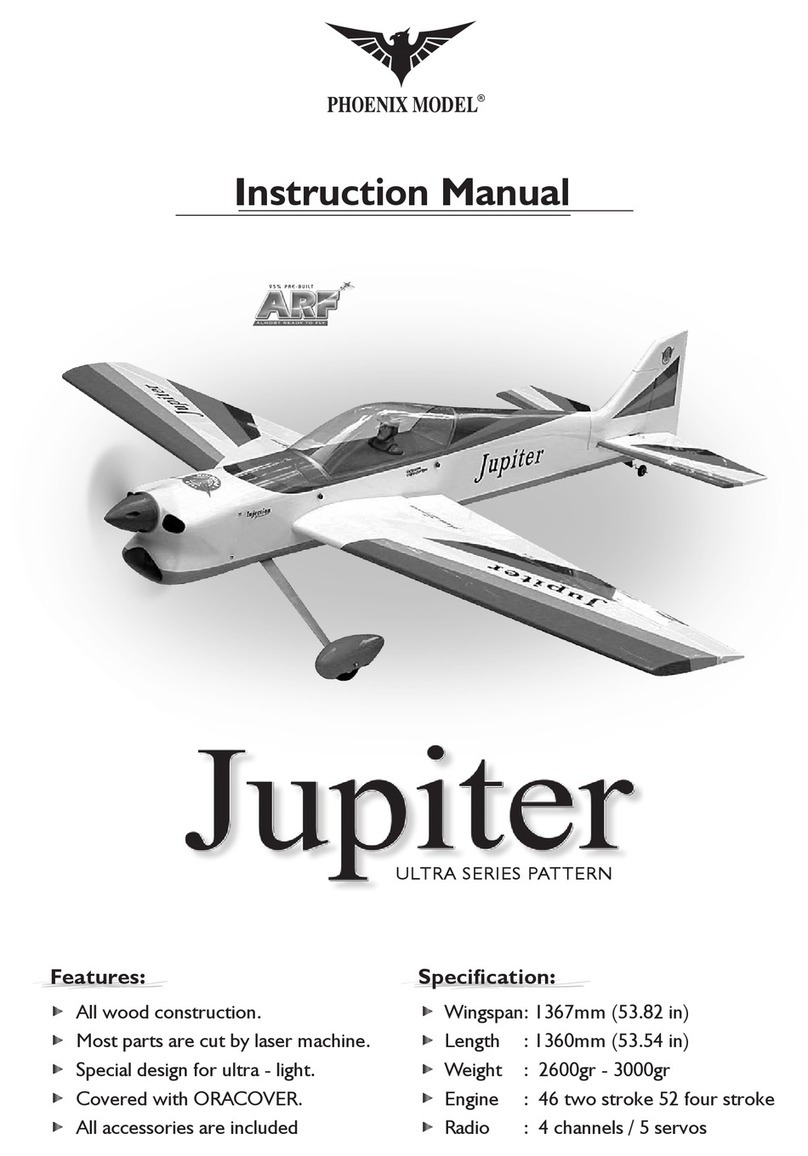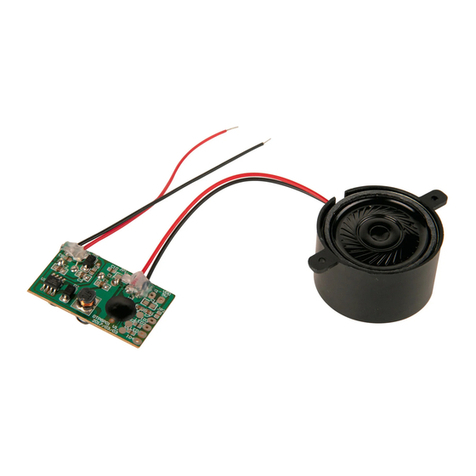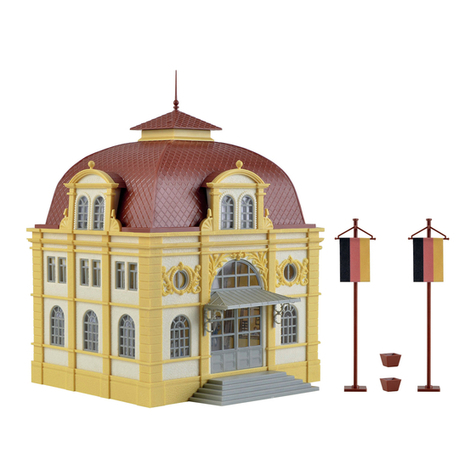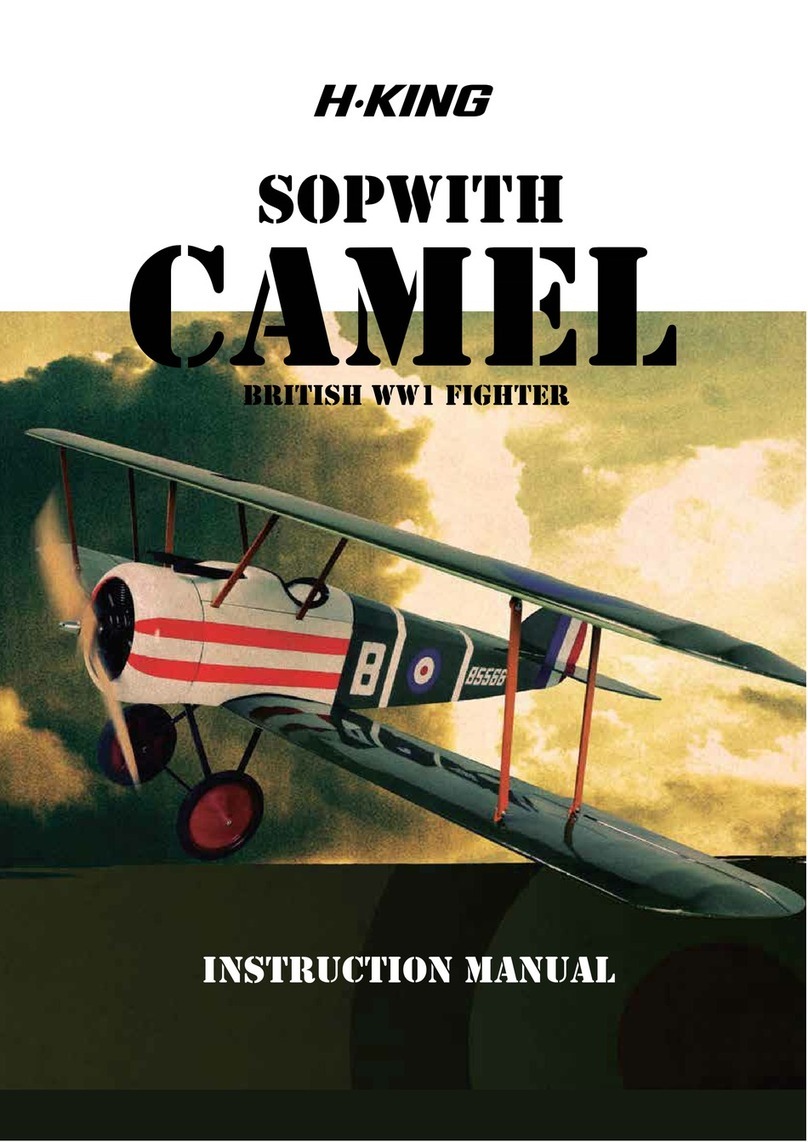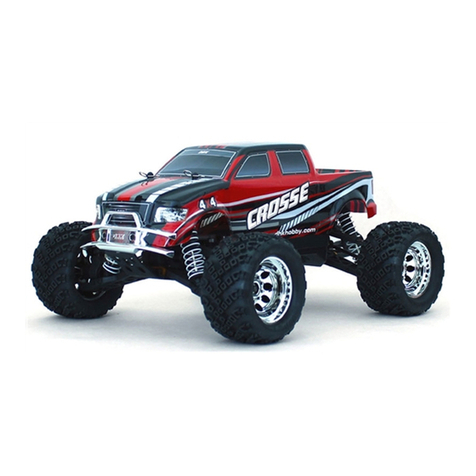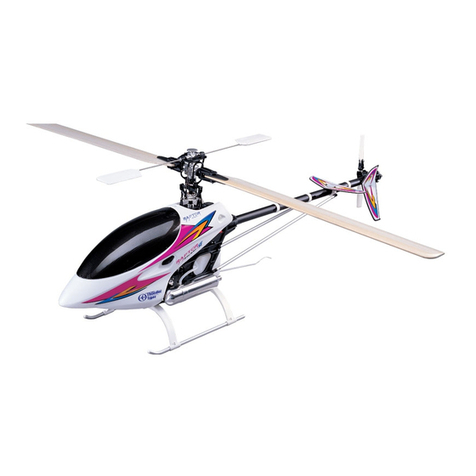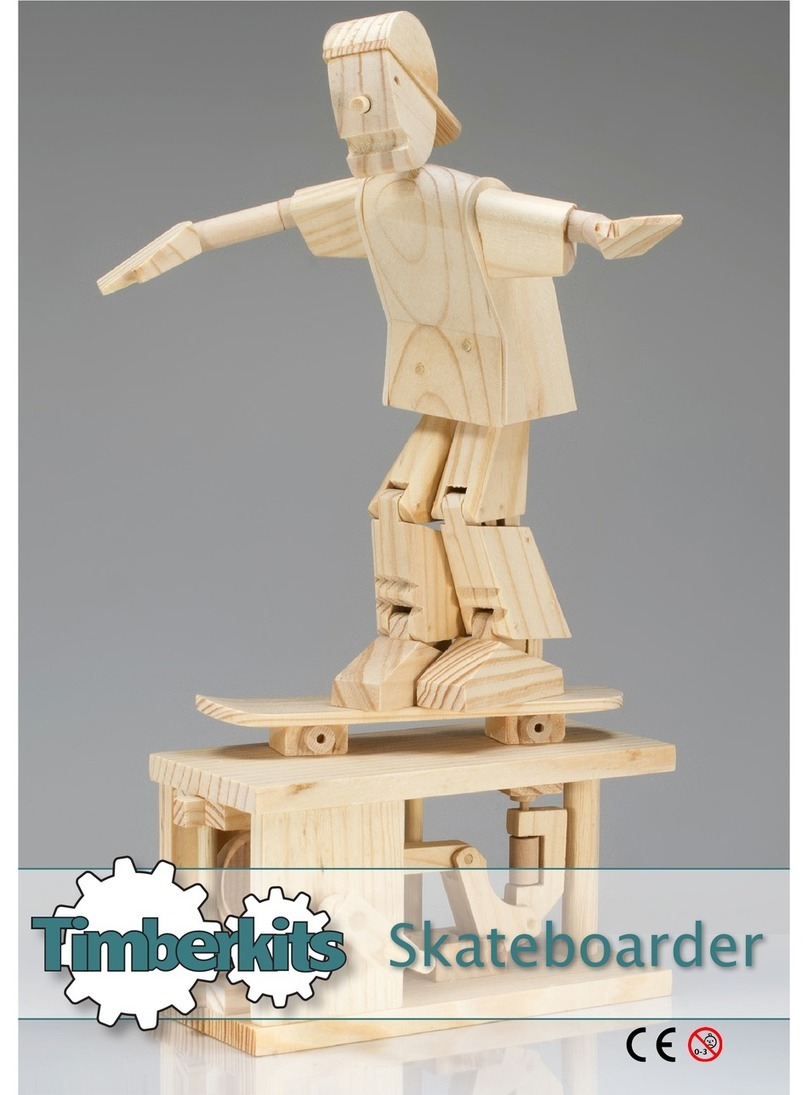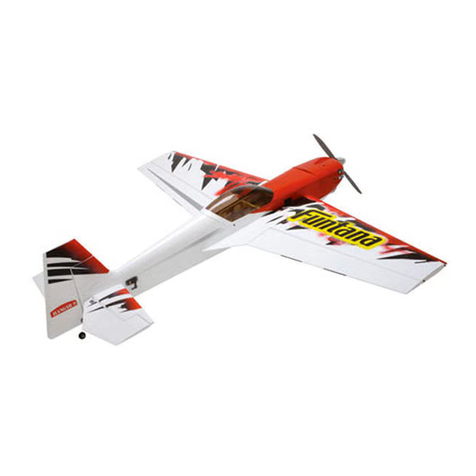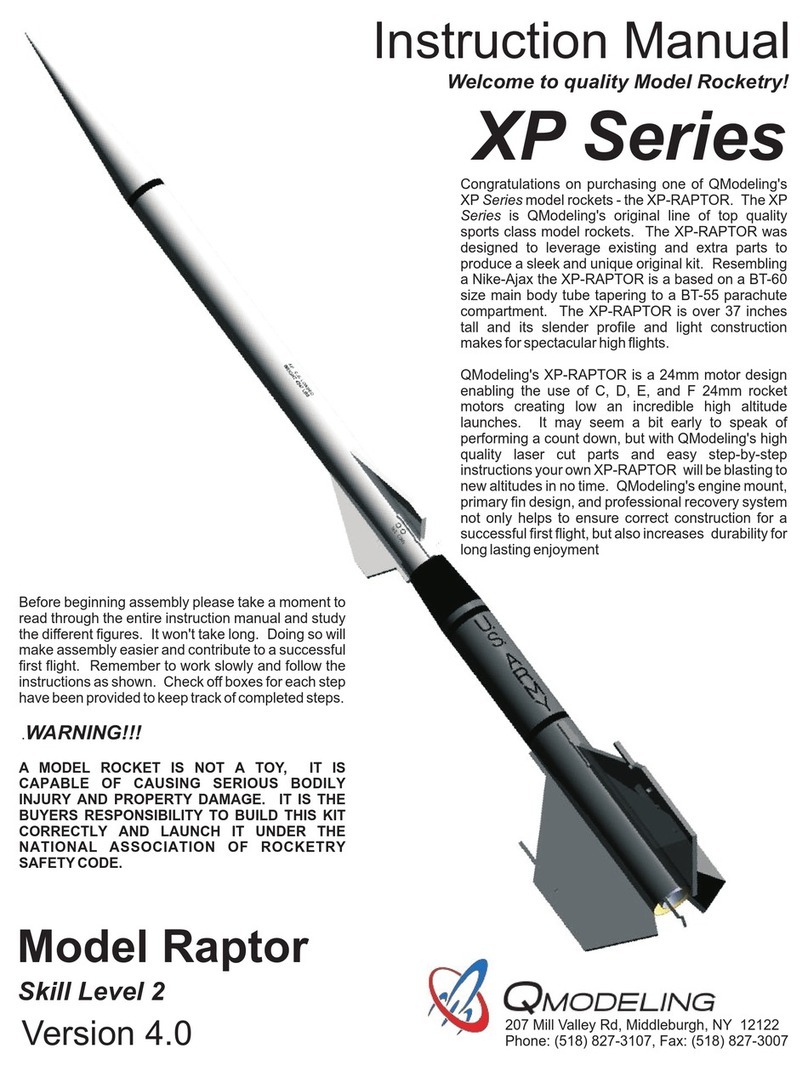I/C FLIGHT GUIDELINES
Made in Vietnam
When ready to fly, first extend the
transmitter aerial.
Operate the control sticks on the
transmitter and check that the control
surfaces move freely and in the
CORRECT directions. ALWAYS land the model INTO the
wind, this ensures that the model lands
at the slowest possible speed.
Switch on the transmitter.
Switch off the transmitter.
Check that the transmitter batteries
have adequate power.
Switch off the receiver.
Switch on the receiver. ALWAYS take off into the wind.
Check that the wings are correctly
fitted to the fuselage. If the model does not respond correctly
to the controls, land it as soon as
possible and correct the fault.
Empty the fuel tank after flying, fuel left
in the tank can cause corrosion and
lead to engine problems.
I/C FLIGHT WARNINGS
Always operate in open areas, away
from factories, hospitals, schools,
buildings and houses etc. NEVER fly
your aircraft close to people or built
up areas.
THE PROPELLER IS DANGEROUS
Keep fingers, clothing (ties, shirt
sleeves, scarves) or any other loose
objects that could be caught or drawn
in, away from the propeller. Take care
at ALL times.
Keep all onlookers (especially small
children and animals) well back from
the area of operation. This is a flying
aircraft, which will cause serious
injury in case of impact with a person
or animal.
NEVER fly near power lines, aerials
or other dangerous areas including
airports, motorways etc.
NEVER use damaged or deformed
propellers or spinners.
DO NOT dispose of empty fuel
containers on a fire, this can lead to
an explosion.
NEVER fly in wet conditions or on
windy or stormy days.
ALWAYS adjust the engine from
behind the propeller, and do not allow
any part of your body to be in line
with the propeller.
SPECIFICATION
- Wingspan: 1290mm (50.7 in)
- Length: 1778mm (70 in)
- Flying weight: 7000-7400 gr
- Wing area: 48 dm2
- Wing loading: 145g/dm2
- Wing type: Naca airfoils
- Covering type: Genuine ORACOVER®
- Retract gear type: Air retract gear with CNC
Suspension Metal Struts (included)
- Radio: 6 - 9 channel . 8 mini hi-torque servo
(Hitec HS5245MG): 2 aileron; 2 flap; 1 steering
nose; 1 retract valve ; 2 rudder ; 2 standard
hi-torque servo (minimum 9kg) for 2 elevator
(not included)
- Engine: edf 120mm (not included)
- Gravity CG: 95mm (3,8 in) Back from the
leading edge of the wing, at the fuselage
- Control throw Ailerons: Low: 7mm up/down,
10% expo; High: 10mm up/down, 10% expo
- Control throw Elevators: Low: 11mm up/down,
12% expo; High: 15mm up/down, 12% expo
- Control throw Rudder: Low: 10mm right/left,
15% expo; High: 20mm right/left, 15% expo
- Control throw flap : Mid : 15mm down;
Landing : 20mm down
- Experience level: advanced
RECOMMENDED EDF AND BATTERY SET UP
- EDF: 120mm, Minimum thrust 7 kg. As BVM 3-12S
EVF or Ramtec 120mm …(not included)
- Lipo cell: 12 cells / 5000- 6000mAh 60C
(not included)
- Esc HV 160A Phoenix Casttle (not included)
Instruction Manual
2
THUNDER STREAK
Instruction Manual
TOOLS AND SUPPLIES NEEDED
• Medium C/A glue
• 30 minute epoxy
• 6 minute epoxy
• Hand or electric drill
• Assorted drill bits
• Modeling knife
• Straight edge ruler
SUGGESTION
To avoid scratching your new airplane, do not unwrap
the pieces until they are needed for assembly. Cover
your workbench with an old towel or brown paper,
both to protect the aircraft and to protect the table.
Keep a couple of jars or bowls handy to hold the
small parts after you open the bag.
NOTE:
1. Please trial fit all the parts. Make sure you have
the correct parts and that they fit and are aligned
properly before gluing! This will assure proper
assembly. The THUNDER STREAK EDF 120MM
SCALE 1:6 ARF is hand made from natural
materials, every plane is unique and minor
adjustments may have to be made. However, you
should find the fit superior and assembly simple.
2. The painted and plastic parts used in this kit are
fuel proof. However, they are not tolerant of many
harsh chemicals including the following: paint
thinner, C/A glue accelerator, C/A glue debonder
and acetone. Do not let these chemicals come in
contact with the colors on the covering and the
plastic parts.
1
• 2 bender plier
• Wire cutters
• Masking tape
• Thread lock
• Paper towels
• Rubbing alcohol
PREPARATIONS
Remove the tape and separate the ailerons
from the wing and the elevators from the stab.
Use a covering iron with a covering sock on
high heat to tighten the covering if necessary.
Apply pressure over sheeted areas to
thoroughly bond the covering to the wood.
INSTALLING THE AILERONS
1. Test fit the ailerons to the wing with the hinges.
If the hinges don’t remain centered, stick a pin
through the middle of the hinge to hold it in
position.
TEMPORARY PIN
TO KEEP HINGE
CENTERED
2. Apply six drops of thin CA to the top and bottom
of each hinge. Do not use CA accelerator. After
the CA has fully hardened, test the hinges by
pulling on the aileron.
C.A glue
1
Remove the covering
3
INSTALLING THE AILERON SERVOS
1. Install the rubber grommets and brass eyelets
onto the aileron servo.
2. Using a modeling knife, remove the covering
from over the pre-cut servo arm exit hole on the
aileron servo tray / hatch. This hole will allow
the servo arm to pass through when installing
the aileron pushrods.
7
To the cowl
THUNDER STREAK
Instruction Manual
2
3. Place the servo into the servo tray. Center the
servo within the tray and drill 1,6mm pilot holes
through the block of wood for each of the four
mounting screws provided with the servo.
4
4. Using the thread as a guide and using masking
tape, tape the servo lead to the end of the
thread: carefully pull the thread out. When you
have pulled the servo lead out, remove the
masking tape and the servo lead from the
thread.
Servo lead
5
5. Place the aileron servo tray / hatch into the
servo box on the bottom of the wing and drill
pilot holes through the tray and the servo box
for each of the four mounting screws. Secure
the servo tray in place using the mounting
screws provided ( 2mm x 12mm ).
6. Repeat step # 2 - # 5 to install the second
aileron servo in the opposite wing half.
INSTALLING THE CONTROL HORNS
1. Remove the covering from the slot on the
bottom of the aileron.
2. Insert the control horn into the slot and secure it
by using C.A glue.
6
To the cowl
8
Remove the covering
9
3. Repeat step # 1 - # 2 to install the control horn
on the opposite aileron.
C.A glue
control
THUNDER STREAK
Instruction Manual
3
INSTALLING THE AILERON LINKAGES
1. Working with the aileron linkage for now, thread
one clevis at least 14 turns onto one of the
threaded wires.
8. Insert the 90 degree bend down through the
hole in the servo arm. Install one nylon snap
keeper over the wire to secure it to the arm.
Install the servo arm retaining screw and
remove the masking tape from the aileron.
9. Repeat step # 4 - # 8 to install the second
aileron linkage. After both linkages are
completed, connect both of the aileron servo
leads using a Y-harness you have purchased
separately.
Silicone Tube
13
10
11
2. Attach the clevis to the outer hole in the control
horn. Install a silicone tube on the clevis.
3. Locate one nylon servo arm, and using wire
cutters, remove all but one of the arms. Using a
2mm drill bit, enlarge the third hole out from the
center of the arm to accommodate the aileron
pushrod wire.
4. Plug the aileron servo into the receiver and
center the servo. Install the servo arm onto the
servo. The servo arm should be perpendicular
to the servo and point toward the middle of the
wing.
5. Center the aileron and hold it in place using a
couple of pieces of masking tape.
6. With the aileron and aileron servo centered,
carefully place a mark on the aileron pushrod
wire where it crosses the hole in the servo arm.
7. Using pliers, carefully make a 90 degree bend
down at the mark made. Cut off the excess
wire, leaving about 4mm beyond the bend.
12
INSTALLING THE CONTROL HORNS for flap
Repeat step #1 - #3 from installing the control
horn for aileron to install the control horn for
flap.
INSTALLING THE flap LINKAGE
Repeat step #1 - #9 from installing the aileron
linkage to install the flap linkage.
14
THUNDER STREAK
Instruction Manual
13
Aileron Control
7mm
7mm
Rudder Control
10mm
10mm
Flap Control
15mm
Elevator Control
11mm
11mm
LATERAL BALANCE
After you have balanced a plane on the C.G.
You should laterally balance it. Doing this will
help the airplane track straighter.
5. Turn the airplane upside down. Attach one loop
of heavy string to the engine crankshaft and
one to the tail wheel wire. With the wings level,
carefully lift the airplane by the string. This may
require two people to make it easier.
6. If one side of the wing fall, that side is heavier
than the opposite. Add small amounts of lead
weight to the bottom side of the lighter wing
half's wing tip. Follow this procedure until the
wing stays level when you lift the airplane.
CONTROL THROWS
1. We highly recommend setting up a plane using
the control throws listed.
2. The control throws should be measured at the
widest point of each control surface.
3. Check to be sure the control surfaces move in the
correct directions.
Ailerons : 7mm up 7mm down
Elevator : 11mm up 11mm down
Rudder : 10mm right 10mm left
Flap T/O: 15mm - Landing 20mm
LOW RATE
95mm
55
8. Remove the covering.
56
Remove the
covering
Remove the covering
51
54
7. Repeat these step from installing the aileron
linkages to install the rudder linkages.
4. Secure the servo plate.
5. Remove the covering.
53
C.A glue
52
Remove the covering
6. Install and glue the rudder control horn.
50
3. Install the rudder servo.
Screw
9. Remove the covering from the fuselage.
49
Remove the covering
2. Remove the covering.
THUNDER STREAK
Instruction Manual
9
INSTALLING THE VERTICAL STABILIZER
1. Repeat these step from the installing aileron for
the installing rudder.
48
C.A glue
47
41
C.A glue
4. Insert the carbon tube to the elevator and glue
it by C.A glue.
44
42
Screw
43
Screw
Elevator servo
46
Clevis M3 Link-ball M3
INSTALLING THE ELEVATOR LINKAGES
40mm
Make the same way from installing the aileron
linkages for installing the elevator linkges.
5. Attach and secure the horizontal stabilizer to
the fuselage using aluminum control horn. Each
control horn secure by 2 screw and using “Loctite”
lock these screw.
6. Make the same way for the second elevator.
THUNDER STREAK
Instruction Manual
8
45
63
64
1. Slide the air inlet to the fuselage.
4. Wooden ring for EDF (Included with the kit) to
connect the air outlet. (using this part when the
out side dimension of EDF smaller than the
inside dimension of the air outlet). If your EDF
is 3-12S BVM, this part must be used.
5. Secure the EDF.
60
61
62
INSTALLING THE EDF (Electric ducted fan)
system
2. Trim 1 hole from the air outlet for the wires of EDF.
3. Slide the air outlet to the fuselage.
59
58
Epoxy glue
Wooden ring
Remove the covering
10. Slide the extension servo lead through the
fuselage. Install the vertical stabilizer and glue it
using epoxy glue.
57
Servo lead
THUNDER STREAK
Instruction Manual
10 Screw
THUNDER STREAK
Instruction Manual
6
31
Crimp
32
M3 Clevis
34
33
35
Metal connectorZip tie
36
Air tank
1. Install the servo to the fuselage.
2. The air valve.
3. Attach the air valve to the servo.
4. Install the air tank.
5. Connect the air tube to the air valve control as
drawing below.
INSTALLING THE AIR CONTROL SYSTEM
8. Slide and secure two cable rod to the nose gear.
9. Slide and secure two cable rod to the steering
arm servo.
THUNDER STREAK
Instruction Manual
7
37
38
INSTALLING THE HORIZONTAL STABILIZER
We are hightly recommended using the digital
servo with the minimum torque 9kg.
1. Install two elevator servo to the fuselage.
40
Remove the covering
3. Remove the covering from the Horizontal
Stabilizer for the elevator joiner.
2. Carbon tube and aluminum arm control.
39
INSTALLING THE LANDING GEAR
SUPERLOCK AIR RETRACTS
VALUE ONE WAY
3 WAY CONNECTOR
AIR SUPPLY
VALVE CONTROL
4 WAY
CONNECTOR
4 WAY CONNECTOR
SERVOAIR TANK
MAIN GEAR
MAIN GEAR
NOSE GEAR
65
6. Slide and fix the air outlet.
THUNDER STREAK
Instruction Manual
11
67
C.A glue
68
66
C.A glue
70
9. Trim the plastic inlet lip.
8. Glue the wooden belt to the air inlet.
10. Glue the plastic inlet lip to the fuselage using
C.A glue.
71
72
69
7. The wooden belt for EDF (Included with the kit)
to connect the air inlet to the EDF.
Air cooling exhaust plastic
C.A glue
Wooden
belt
C.A glue
INSTALLING THE MAIN AIR RETRACT gear
1. Trim the plastic wheel well.19
Air tube
4. Place the retract to the wing and pull out the air
tube through the wing section.
21
Screw
22
Screw
20
Screw
7. Lock-up the axle.
THUNDER STREAK
Instruction Manual
4
16
15
3. Install the tube to the air retract.
2. Glue the plastic wheel well in place.
17
6. Install and secure the wheel.
5. Secure the retract.
C.A glue
18
350mm
350mm
4. Install the tube to the air retract.
5. Secure the air retract.
28
Screw
25
26
C.A glue
Steering nose servo
24
3. Install the steering nose servo into the servo tray
in the fuselase.
2. Glue the wheel well by C.A glue to the fuselage.
INSTALLING THE NOSE AIR RETRACT gear
1. Trim the plastic wheel well.
THUNDER STREAK
Instruction Manual
5
Screw
8. Make the same way for the opposite gear retract.
6. Secure the nose wheel.
7. Secure the alxe.
M3
30
Screw
29
Trim
Screw
23 27
500mm
500mm
THUNDER STREAK
Instruction Manual
12
Joining the fuselage
- Joining the fuselage using 3 aluminum tube.
12. Glue the air cooling exhaust plastic by C.A glue.
74
11. Cut the hole on the fuselage for installing the
air cooling exhaust plastic.
73
Remove the
covering
C.A glue
75
Joiner
76
Screw
OPEN AND CLOSE the canopy
BALANCING
1. It is critical that your airplane be balanced
correctly. Improper balance will cause your
plane to lose control and crash.
THE CENTER OF GRAVITY IS LOCATED
95mm BACK FROM THE LEADING EDGE OF
THE WING, AT THE FUSELAGE. BALANCE A
PLANE UPSIDE DOWN WITH THE FUEL
TANK EMPTY.
2. Mount the wing to the fuselage. Using a couple
of pieces of masking tape, place them on the
top side of the wing 95mm back from the
leading edge, at the fuselage sides.
3. Turn the airplane upside down. Place your
fingers on the masking tape and carefully lift
the plane.
4. If the nose of the plane falls, the plane is nose
heavy. To correct this first move the battery
pack further back in the fuselage. If this is not
possible or does not correct it, stick small
amounts of lead weight on the fuselage under
the horizontal stabilizer. If the tail of the plane
falls, the plane is tail heavy. To correct this,
move the battery and receiver forward or if this
is not possible, stick weight into the firewall.
When balanced correctly, the airplane should
sit level or slightly nose down when you lift it up
with your fingers.
Here is our set up for testing flying.
- 12 cell thunder power 5000 mAh 70c.
- BVM 3-12S EDF.
- ESC 160A phoenix.
77
Open and Close
78
Lipo battery
